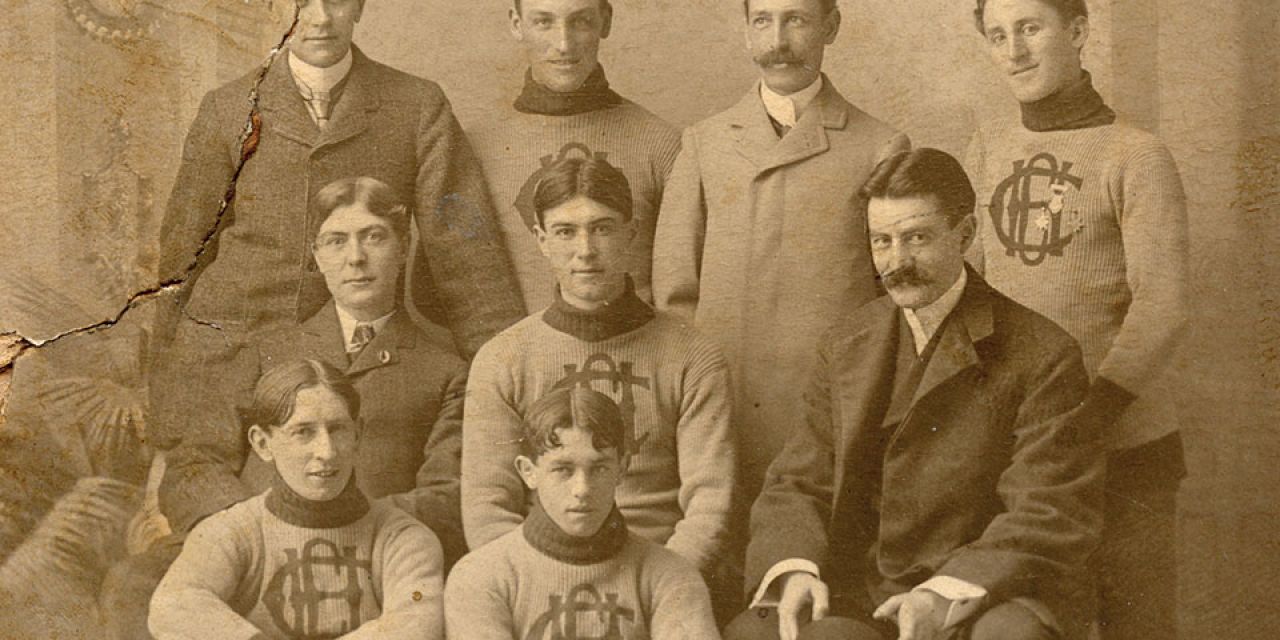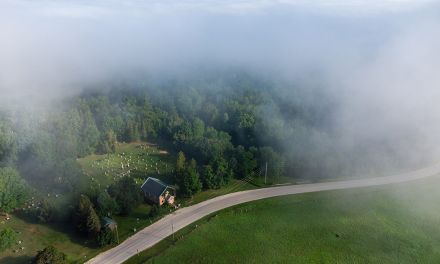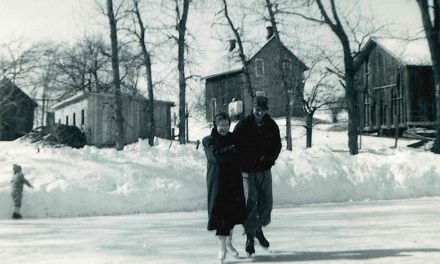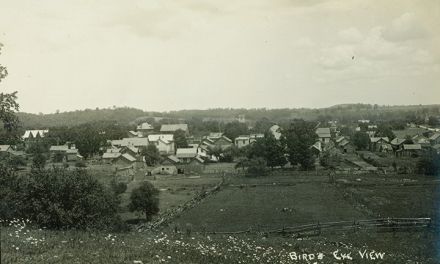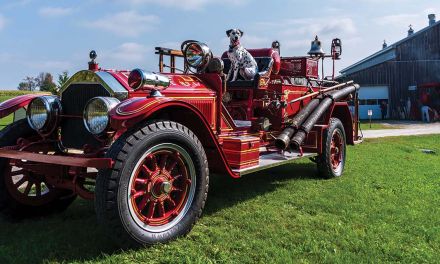An early photograph of a men’s hockey team in Collingwood, c. 1900. Note the uniforms and the dog wearing a top hat. Collingwood Museum Collection, X973.458.1.
Blame Mickey!
Script by Ken Maher, Stories from Another Day, a Collingwood Museum Podcast.
Photos courtesy of the Collingwood Museum.
In 1915, the Collingwood Shipbuilders faced the Hamilton Tigers. After being “slipped a mickey” between periods, the Shipbuilders fought through bleary eyes and battered bodies to write one of the most storied chapters in Collingwood’s hockey history.
A groan went up from the small crowd of Collingwood fans as bleary-eyed Buck “the Buckaroo” Walton’s shot went wide of the net once again. As the play stopped a moment later, Bert McLeod skated over to Buck and whispered, “Hey, man, three times now I’ve gotten the puck from one end of the ice to the other and over to you. Get it together. Listen, Buck, I’m going to get one more out in front of you, even if it kills me. If you don’t put that puck in the net, I’m going to kill you.” Harsh words, made all the harsher when you understood it wasn’t Buck’s fault he missed. It was Mickey’s. Bert knew all about Mickey, but he didn’t want to hear about it.
You see, it was the third period in the second and final game of a pivotal goals-to-count series between the Collingwood Shipbuilders and the Hamilton Tigers. It was the fledgling days of the Ontario Hockey Association (OHA) in the year 1915. The hometown Hamilton Tigers were the odds-on favourites to take the title that year. They were already up one game over the Shipbuilders, having defeated them 4–3 on Collingwood’s home ice.
And little wonder; the Tigers had a packed team, and through injury, trades, and loss of players to other leagues, the Shipbuilders were nowhere near the strength of even two years before when, led by their own Holy Man of Hockey, they had taken the championship… but that is a story for another day, and that team was now history. However, on this day, the underdog Collingwood Shipbuilders had a real chance—not just to win the game but also the series. If only they could hold on just a little longer. If only Mickey didn’t ruin it for everyone.
The problem with Mickey had begun after the first period when the Collingwood team stood in the lead, three goals to one. That put them one goal up for the series. The handful of Collingwood supporters in the stands were on the edge of their seats. But then something happened between the periods. Mickey happened. And the Collingwood team that skated out for the second period was completely different. Impy Foulis never even made it out of the dressing room. Jack Dance and Howard Telfer were soon leaning over the boards, heaving their guts out. Buck Walton was reeling not even five minutes into the period, but he just refused to quit and kept on skating. Josh Belcher collapsed and had to be carried off the ice.
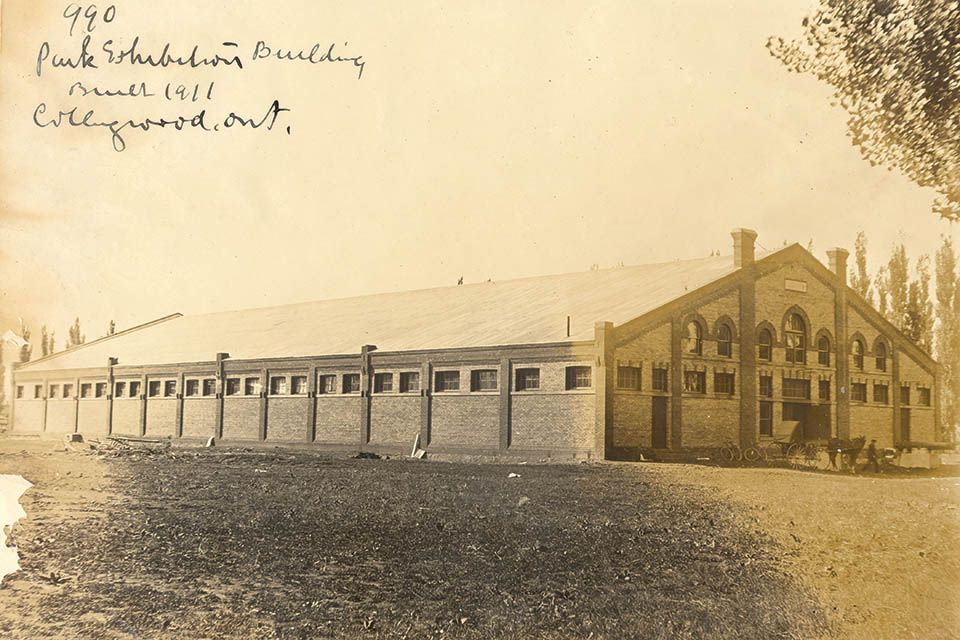
The cornerstone for Collingwood’s second arena was laid in 1909. It served as the Great Northern Exhibition’s main building, an armoury, and a skating rink. The town’s third arena opened in 1948 on Hurontario Street, later renamed the Eddie Bush Memorial Arena. Collingwood Museum Collection, X970.550.1.
Only Bert McLeod on defence and Tommy Clark in goal seemed unaffected. By some miracle of individual heroics, including Belcher staggering back to the ice, the team managed to hold the Hamilton boys at bay, giving over no goals and even managing to put another one in off the stick of McLeod.
When the team lurched off the ice at the end of the second period, five of the seven Collingwood players were doubled up with cramps in the dressing room. And that’s when they discovered they had been “slipped a Mickey.” Their water bucket had been doped. The practice of lacing a drink with drugs or poison was named after the infamous Chicago bartender Mickey Finn, who did just that to his wealthy customers so he could rob them and dump them in the alley behind his bar, none the wiser. Well, it seems some Mickey Finn wannabe had tried to rob the Collingwood boys of any chance of victory. Yet, on the team, Bert and Tommy were fine because they had not taken any of the water from the bucket between periods. But here was the problem: there was still one more period to play, no matter what kind of nightmare of bleary eyes and missed goals they found themselves in.
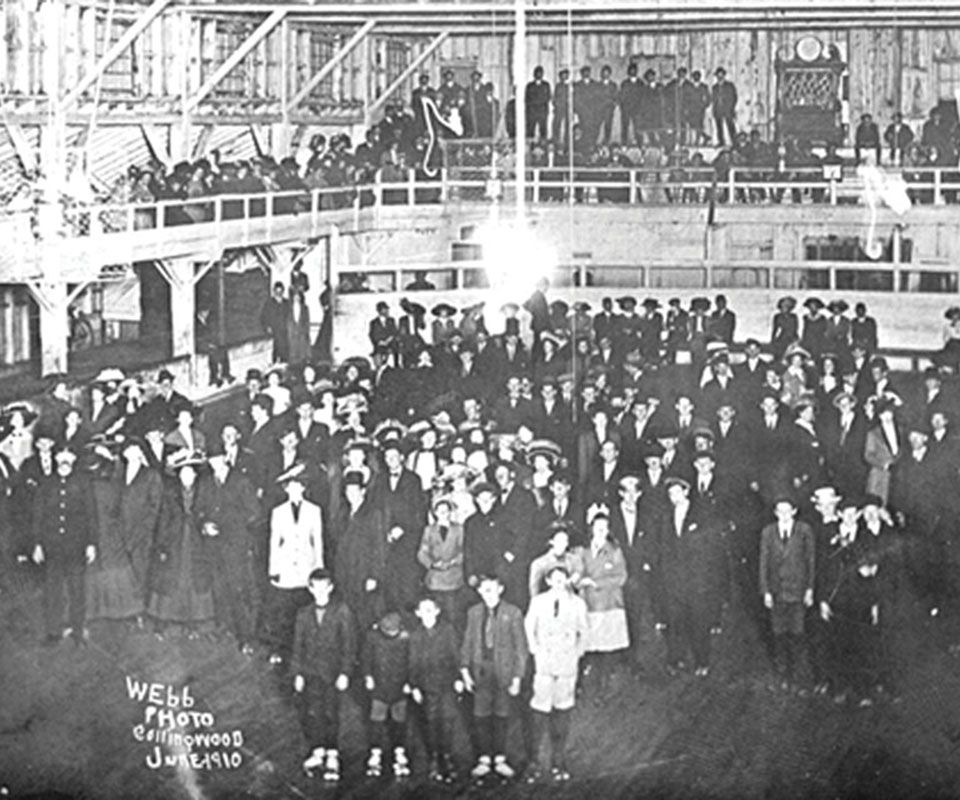
Photographed by Albert S. Webb in June 1910, this is the only known interior shot of the Collingwood Skating Rink, a popular roller-skating venue. Collingwood Museum Collection, X973.607.1.
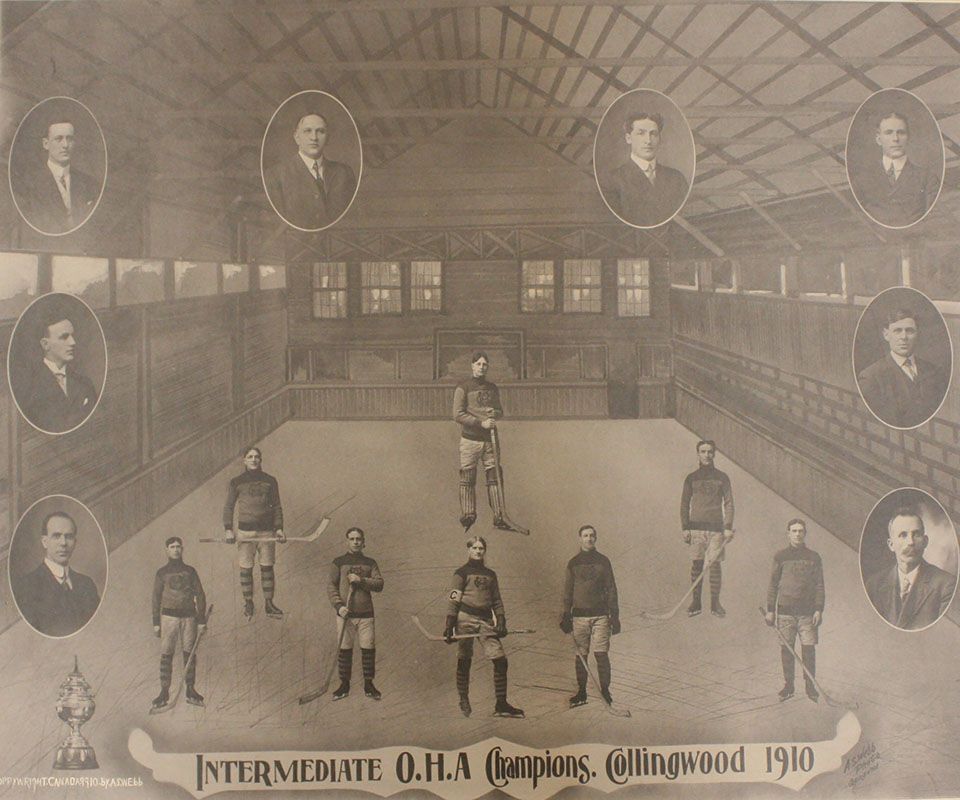
A composite photo of the 1910 Collingwood Shipbuilders championship team by Albert S. Webb. Collingwood Museum Collection, X971.728.1.
And so it was, on the very next play, after Bert and Buck’s whispered conversation, that McLeod streaked for the corner, and out came the promised pass. Twenty feet in front of the net and dead straight onto Walton’s stick. And then John “Buck” Walton, one of the toughest men ever to grace the Collingwood uniform, did the only thing he could. Instead of taking the shot he had already missed three times, he dropped his head, cradled the puck on the heel of his stick, and skated right through the Hamilton goalie and into the net.
In the aftermath of the Collingwood victory, there was a lot of furor over the doping scandal and threats of legal action. But ultimately, the OHA did nothing, and Collingwood let it drop. Collingwood would make it to the semifinals before losing to a great Orillia team that would end up taking the championship that year. And as for the Hamilton Tigers? Well, their season was much shorter. Having lost the goodwill of their backers, they ended up disbanding for good. And they had no one to blame but themselves. E

